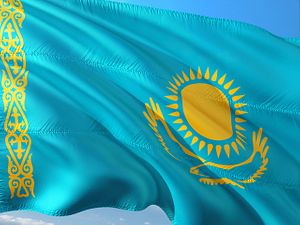The documentary Kazakh filmmaker Kanat Beisekeyev released two weeks ago is a miracle, of sorts. While filming in Iran, he and his team were detained by local authorities, who seized the group’s equipment and footage. Thanks to an oversight on the part of the police, a copy of the confiscated materials survived in someone’s backpack, which was enough for Beisekeyev to put the documentary together.
The 20-minute documentary, titled “Kazakhs in Iran,” is the third in a series about the Kazakh diaspora. The other two films, focusing on Mongolia’s Kazakh population and Kazakhs living in Turkey were released over the last three months.
Beisekeyev is not the only artist using the documentary medium to explore themes of identity, belonging, and citizenship among the Kazakh diaspora. Journalist and storyteller Raikhan Rakhim also released a documentary about Turkey’s Kazakhs in 2018. It might seem like Rakhim and Beisekeyev are competing for views, given how niche the topic appears, but both documentaries about Turkey’s Kazakh population have over 200,000 views on YouTube.
While academics are also studying the history and identity of the Kazakh diaspora, they are still working to tackle basic questions. Historian Gulnara Mendikulova and a team of researchers worked from 2007 to 2009 to conduct archival research in several countries to understand the size and experience of the Kazakh diaspora across Eurasia. According to Mendikulova, it is incredibly difficult to gather historical sources and contemporary data alike about the global Kazakh diaspora.
More than 4 million Kazakhs — more than a quarter of the world’s Kazakh population — live beyond Kazakhstan’s borders, as a result of annexed territories and diasporic migration in the late 19th and early 20th centuries. The journeys of communities featured in Beisekeyev’s films are quite diverse.
For example, many of the Kazakhs who live in present-day Russia and Uzbekistan are citizens of those countries as a result of a border delineation processes that cut across communities over many decades of Russian imperial and then Soviet rule.
This contrasts with Kazakhs in Mongolia and Turkey, whose ancestors arrived from Western China in different waves. Mongolian Kazakhs’ ancestors arrived around 1840, while many Kazakhs living in Turkey today were born on their families’ journey out of China through India, Pakistan, and Afghanistan to Anatolia in the 1950s.
Iran’s Kazakh population is much smaller than other Eurasian countries, with a small group of families fleeing famine in Soviet Kazakhstan. According to Beisekeyev’s documentary, about 100 families live in Gorgan, a city 400 km (about 250 miles) northeast of Tehran. In Iran, it has been difficult to hold on to Kazakh language and traditions, but the community persist thanks to a handful of dedicated leaders.
Since 1991, Kazakhs who migrated and their descendants who consider themselves ethnic Kazakhs have had an opportunity to return to their ancestral homeland. The Kazakh government has actively supported return migration, a move some have argued was meant to rebalance the country’s demographics in favor of the titular group.
Several programs attracting oralman, the Kazakh word for those in the diaspora, have offered financial incentives to relocate and settle in specific strategic provinces. In total, about 1 million ethnic Kazakhs from across Eurasia have repatriated. The prospects of leaving the countries that Kazakhs have called home for generations to move to Kazakhstan, back to the homeland in a sense, is a central theme of both Beisekeyevs’ and Rakhim’s work.
“It would be nice if all the Kazakhs could go back to Kazakhstan, but we grew up [in Turkey] and have jobs here,” reflects Metekhan Elim in Beisekeyev’s second film. Elim is a resident of Istanbul and descendent of Kazakh migrants; he speaks Kazakh with a thick Turkish accent, but makes a point to speak it nonetheless. Wondering about the prospects of moving to Kazakhstan, Elim quietly asks the camera, “Will they like us? Will they accept us?”
Elim’s fears about acceptance are not unfounded. As Almaz Kumenov reported for Eurasianet, many oralman — especially those who did not grow up in another Soviet country — struggle to adapt to a country where Russian is spoken widely. Government assistance like land, employment, and financial benefits for new arrivals has proven controversial and led to some feelings of resentment toward returned migrants.
Negative reactions — including resentment or fear — toward newcomers are certainly not unique to Kazakhstan or Central Asia, but oralmans’ experiences challenge some older social science assumptions about ethnically homogeneous societies. If oralman, ethnic Kazakhs, are seen as the “Other” in Kazakhstan, what does that mean for other concepts like an ancestral homeland or the distinction between home and host country?
Rakhim’s and Beisekeyev’s documentaries push us to think more deeply and critically about what assimilation really means, two or three generations after mass migration. In doing so, they offer an alternative to popular narratives underlying stories of migration that emphasize how trauma and ephemerality define the migrant experience. The stories of Kazakh communities in Turkey, Mongolia, and Iran as told by these young filmmakers gracefully show how time and distance shape the contours of identity and belonging.
































